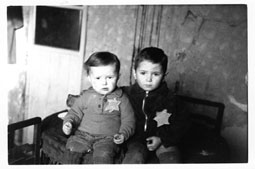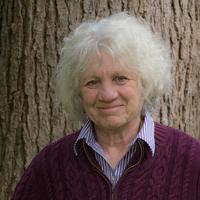
Jewish engineer and amateur photographer George Kadish took hundreds of clandestine pictures while incarcerated in Lithuania's Kovno ghetto established by the Germans in 1941. "The camera will be my revenge," he said.
Forty-six of his remarkable photos are now on view in Light One Candle , at the Vancouver Holocaust Education Centre. Such photography was an activity strictly forbidden -- and harshly punished -- by the Nazis. It is not surprising that only one other Jewish photographer -- Mendel Grossman in Lodz, Poland -- managed to create a substantial record of the ghettoization of the Jews during the Holocaust. The photographic record we have of the Holocaust was created mostly by the perpetrators.
The extraordinary ordinary
Roberta Kremer, director of the VHEC, says the subjects that caught Kadish's eye were quite different from those the perpetrators selected. "He took many pictures of children, of ordinary activities."
George Kadish used a concealed Leica as well as a button-hole camera that he made himself. Because he was an engineer, Kadish was assigned to work in the x-ray department of a German military hospital outside the ghetto. He was able to barter for film and had access to the chemicals he needed to develop his precious negatives. He smuggled the pictures out of the hospital in a hollowed-out crutch and buried them in milk cans.
Revenge written in blood
One of the earliest images in the collection dates from June 1941, when the Nazis invaded Lithuania. As the Soviets, who had occupied the country since August 1940, withdrew in the face of the German advance, the Lithuanians turned on the Jewish population. They killed thousands in just a few days. Kadish came upon a dying neighbour. The man dipped his finger in his own blood, wrote the Yiddish word nekoma (revenge) on his apartment door. Kadish photographed the man's last act of defiance.
Yet many of his photographs are poignant, even tender -- a mother with her newborn baby, two toddlers pressing close together, boys playing in the street. "He was documenting life in the ghetto, not death in the ghetto," Kremer says, "and yet he believed his photographs would be his revenge. That's a contradiction in a way.
"These were terrible conditions, but compared to the concentration camps, we don't think of them that way. He had to take pictures very quickly and in places where he would not be noticed…. You can't stand in front of two officers beating someone and take a picture."
Kadish escaped in July 1944, just before the Nazis deported the remaining inhabitants in the Kovno ghetto. But his determination to document what was happening was as strong as ever. From a safe vantage point across a river, he photographed the ghetto as it was burned. Kadish survived the war, and eventually returned to Kovno to retrieve his negatives -- safely stashed away in their milk cans.
Light One Candle runs at the Vancouver Holocaust Education Centre, 950 West 41st Avenue, until May 28. Hours are Monday to Thursday, 9-5; Fridays 9-4. ![]()















Tyee Commenting Guidelines
Comments that violate guidelines risk being deleted, and violations may result in a temporary or permanent user ban. Maintain the spirit of good conversation to stay in the discussion.
*Please note The Tyee is not a forum for spreading misinformation about COVID-19, denying its existence or minimizing its risk to public health.
Do:
Do not: